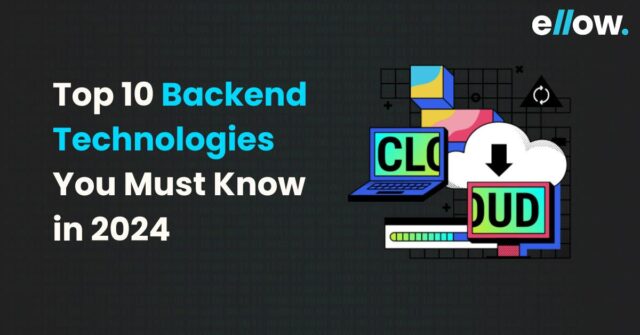1. Node.js
Node.js is widely recognized as a powerful backend technology. It is used to build scalable and fast network applications. Its event-driven, non-blocking I/O model is employed to handle numerous simultaneous connections with high efficiency. JavaScript is the language in which Node.js applications are written. This has allowed full-stack development to be streamlined, as both client-side and server-side scripting can be handled with the same language.
2. Django
Django is a high-level Python web framework that is known for encouraging rapid development and clean, pragmatic design. It is chosen by developers to build robust and secure web applications. The principle of “Don’t Repeat Yourself” (DRY) is followed by Django, reducing the redundancy in coding tasks. A wide range of libraries and a powerful ORM (Object-Relational Mapping) system are offered by Django, making it easier for developers to manage databases without writing complex SQL queries.
3. Ruby on Rails
Ruby on Rails, often simply referred to as Rails, is a server-side web application framework written in Ruby. Rails is appreciated for its convention over configuration (CoC) principle, which eliminates the need for extensive configuration files, allowing developers to get their applications running more quickly. Its MVC (Model-View-Controller) architecture is used to separate application logic from the user interface, promoting organized and maintainable code.
4. Spring Boot
Spring Boot is an extension of the Spring framework, and it is designed to simplify the development of production-ready Spring applications. With Spring Boot, dependency management and configuration are minimized, allowing microservices and web applications to be developed more efficiently. The concept of convention over configuration is embraced by Spring Boot, making it easier to get started with minimal setup.
5. Flask
Flask is a lightweight micro-framework for Python that is often used for developing small to medium-sized web applications. It provides a simple and unopinionated approach to web development, giving developers the flexibility to choose their tools and libraries. Flask is preferred when a minimalistic and easy-to-learn framework is required for building quick prototypes or simple applications.
6. Laravel
Laravel is a PHP framework that is known for its elegant syntax and developer-friendly features. It has been built to facilitate common tasks such as routing, authentication, and caching. Laravel’s built-in ORM, Eloquent, is utilized to interact with databases, allowing data to be retrieved and manipulated in a more intuitive way. Developers are provided with a robust ecosystem, including tools for tasks like queue management and event broadcasting, making Laravel a preferred choice for modern web application development.
7. Express.js
Express.js is a minimal and flexible Node.js web application framework that provides a robust set of features for web and mobile applications. It is known for its simplicity and speed, allowing developers to create APIs and web applications with minimal effort. Express.js is often used in conjunction with other technologies in the MEAN (MongoDB, Express.js, Angular, Node.js) stack, where it serves as the backend framework.
8. ASP.NET Core
ASP.NET Core is a cross-platform, high-performance framework for building modern, cloud-based, internet-connected applications. It is widely adopted by developers who require enterprise-grade applications with complex workflows and integrations. ASP.NET Core’s modularity and support for dependency injection have been appreciated, as they allow applications to be more maintainable and testable.
9. GraphQL
GraphQL is a query language for APIs that has been developed to enable clients to request the exact data they need. This technology is being increasingly used as an alternative to REST, as it allows for more efficient data retrieval and reduces the number of requests needed to fetch related data. GraphQL’s flexibility is highly valued, as it allows multiple resources to be fetched in a single request, reducing the overhead of multiple round trips to the server.
10. Phoenix
Phoenix is a web development framework written in Elixir, which is a functional programming language. It is recognized for its ability to handle large-scale, real-time applications with ease. Phoenix’s ability to manage thousands of concurrent connections efficiently has made it a preferred choice for applications requiring real-time communication, such as chat applications and collaborative tools.
These backend technologies have been highlighted for their strengths and the unique features they bring to web application development. Whether the goal is to build scalable microservices, manage complex databases, or develop real-time applications, understanding and utilizing these technologies will be beneficial for anyone working in the field of backend development.
4oPhoenix is a web development framework written in Elixir, which is a functional programming language. It is recognized for its ability to handle large-scale, real-time applications with ease. Phoenix’s ability to manage thousands of concurrent connections efficiently has made it a preferred choice for applications requiring real-time communication, such as chat applications and collaborative tools.










